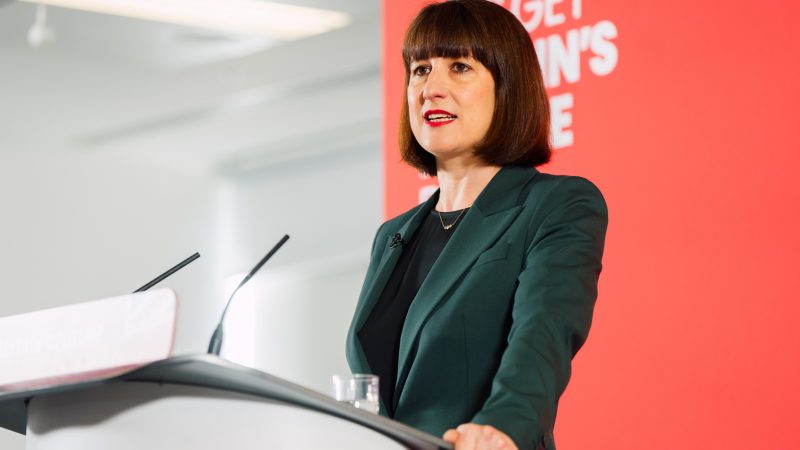
Thirty years ago, Gordon Brown was being ridiculed for his reference to “Post Neo-Classical Endogenous Growth Theory” – not least by Michael Heseltine, who attributed the line to the incoming Chancellor’s adviser, famously telling Tory conference, “It’s not Brown’s, it’s Balls”.
That sort of jargon was never likely to cut through on the doorstep, but it reflected a close engagement with academic economics, and a clear account of how growth happens. The same implicit argument that increasing human capital is the key to raising living standards was put more pithily in Tony Blair’s slogan “education, education, education”.
Growth, growth, growth – but how?
Keir Starmer’s version of Blair’s catchphrase asserts that his three priorities are “growth, growth, growth”. Yet his model of how to achieve that goal is less apparent. That reflects the current state of the economics profession, which has become more modest since the financial crisis, shying away from grand theory and prescriptive recipes for policymakers. It also fits with Starmer and Rachel Reeves’ preference for pragmatism over ideology.
Yet the absence of a single unified theory of everything on the economy does not mean that Labour are starting with a blank page. Through a number of announcements, reviews and comments, the outlines of the Party’s worldview are becoming clear. That’s why along with LSE Professor Neil Lee, I gathered a number of leading economists to run the rule over different facets of Labour’s economic policy to identify how they might govern.
Industrial strategy, investment, cheap energy
The first thing they found is that industrial strategy would be central to Labour’s approach. Thus far, this seems to be defined more by what it isn’t – ‘picking winners’ – than what it is. Nevertheless, in the broadest terms, it is likely that Labour will seek to identify sectors where the UK or particular parts of it have particular strengths (such as tidal power or carbon capture, use and storage), and will actively support them to develop a plan for growth. The expectation is that a more joined-up approach, and being a more reliable partner to business than the current government, will pay dividends.
Second, the party has signalled its intention to take inspiration from US Treasury Secretary and pursue ‘modern supply side’ economics – improving the productive capacity of the economy in various ways. Driving up investment – both public and private – will be a central part of the task. However, it comes with a trade-off: it’s likely people will have to sacrifice some consumption today to invest in the future.
Another prominent area of supply side policy, not least given Yellen’s link to ‘Bidenomics’ – is the energy transition. Much of the public discussion here focuses on the demand side – for example, the jobs directly created by investment in battery factories or wind farms. But the supply side argument is that these improvements to energy efficiency and security will make us more productive by driving down energy costs for businesses.
Hopes New Deal and planning will boost growth
Less noticed is the way that Labour’s supply side approach extends to workers’ rights. There is optimism within the party that its New Deal for Working People can help improve productivity. More secure workers might be better motivated. Employers could be encouraged to make a stronger commitment to their workers and invest in training and progression. Regulation could also encourage automation, though Labour would presumably feel more ambivalent about that.
A fourth important potential element of supply-side growth is planning reform, which will be critical to building more homes to allow people to be near the best jobs, but also to developing needed infrastructure such as road and rail.
That is why Rachel Reeves dubbed the planning system “the single greatest obstacle to our economic success” in her March Mais lecture. Yet it remains to be seen if the detail of the policy matches the scale of the ambition: in his contribution to our collection, Paul Cheshire described Labour’s housing plans as the boldest in half a century, but still far from adequate.
Less focus on education, skills, immigration, free trade?
At the same time, there are a number of potential growth levers that the Labour Party appears to have deprioritised. Most striking is education and skills – which the party appears to see more through the lens of social mobility than economic growth. While innovations like the proposed Skills England body will align training with industrial strategy, there is little indication that there will be anything like the increase in investment that accompanied New Labour’s expansion of higher education.
Those within the party would likely deny that they’re neglecting education, but they would have to admit they are not going to be pursuing a trade or migration led growth strategy. Between an aversion to anything that looks like reversing Brexit and the political challenge of record net migration, economic openness will not be the order of the day.
“Securonomics”, “the everyday economy”, “productivism”, “Heevesianism” – there is no shortage of buzzwords floating around to describe Labour’s economic worldview. More helpful is to look at the channels through which it will try to generate growth, and those it will ignore. Higher investment, stronger labour rights, cheaper energy and looser planning are core to its strategy. Skills, migration and trade less so. That appears to be the strategy, whatever we choose to call it.




More from LabourList
A year in power: The cabinet on their proudest wins and favourite moments
‘One year on, Labour still hasn’t reckoned with collapsing trust in politics’
‘I’m the Labour MP who beat Liz Truss. Here’s how the campaign to unseat her unfolded’